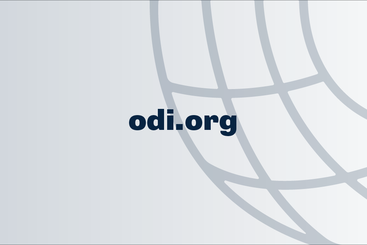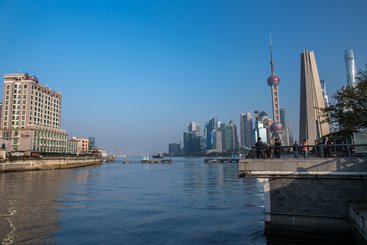Welcome to the May issue of our China and global development round-up. In this issue I cover China’s vision of global economic governance, the Belt and Road Initiative (BRI), China’s health and vaccine diplomacy, and new evidence on the way Chinese institutions lend.
China’s vision of global economic governance
I fully enjoyed this webinar from the Global Development Policy Center, where Jake Werner presented his work on China’s vision of global economic governance.
It was particularly interesting to hear about China’s vision of the ‘right to development’, and how this contrasts with the dominant approach based on free markets; as well as China’s vision of ‘state sovereignty’, in opposition to the binding rules of multilateral institutions. The webinar provides food for thought on the broader global development scene, and the way Chinese institutions can shape it.
The Belt and Road in global development
China’s approach to global economic governance can be seen ‘in action’ in this article (in Chinese) by Wang Junshen from the Chinese Academy of Social Sciences, which explores the role of the BRI in promoting global development.
The author outlines China’s vision of the BRI, stating it is not ‘the Chinese Marshall Plan’, but rather an initiative jointly built with other countries, which aims at common development. The article also suggests discussions on the BRI should not only focus on large countries, but also small and developing countries. These points reflect the ‘right to development’ and the principle of ‘state sovereignty’ discussed by Werner.
Other interesting points covered are the importance of understanding the BRI beyond its economic impact, looking at political and diplomatic ties; and the interest in having a prosperous neighbourhood, which is seen as a condition for China’s own development as well. The article also reflects on challenges of implementing the BRI and its impact on host countries.
In a similar vein, this article (in Chinese) by Bian Yongzu of the Renmin University of China also reflects on one of the challenges of the BRI – the participation of Chinese enterprises in the initiative. This highlights one issue we often disregard: the challenges encountered by Chinese firms when planning to invest abroad.
The article focuses on access to finance, suggesting that many Chinese small and medium enterprises do not have the capital to invest abroad, and the current status of the financial system does not offer many options for them. It is worth pausing on this point. The media often depicts Chinese enterprises as all-powerful, but in reality only some of those who want to invest abroad have the means and the capacity to do so.
China’s vaccine and health diplomacy
In the midst of Covid-19, many started talking about China’s ‘vaccine diplomacy’ as a way of exercising soft power. This article by Suisheng Zhao unpacks what this means, and how it is going so far. He explains that China’s generous medical donations to many countries stand in stark contrast with the behaviour of many other states, which have been stockpiling vaccines. According to Zhao, this greatly increases China’s soft power. He also discusses how the vaccine distribution has helped popularise Chinese medical products, and made Sinovac and Sinopharma household names in many countries.
But this is not new. Focussing on Africa, this article (subscription required) by Lina Benabdallah shows that while the Chinese vaccine diplomacy has caused a ‘media buzz’, in reality this is nothing groundbreaking. China’s humanitarian assistance to Africa, including medical aid, started in the 1960s, with the Chinese government sending medical equipment, medical teams and building hospitals. This article is part of a broader series of pieces on a variety of Africa-China issues supported by the China-Africa Research Initiative – well worth a read!
Finally, this piece by Zeng Aiping frames China’s medical aid to Africa in the context of the ‘Health Silk Road’. One of the many incarnations of the BRI, the Health Silk Road focuses on cooperating (with African countries, in this case) on a wide variety of issues, such as provision of medical supplies but also training of African medical personnel and joint health research.
The article highlights the challenges facing the China-Africa Health Silk Road. These include weak African health systems, the fact that the Health Silk Road is based on aid but neglects trade and investment, and the fact that American and European countries continue to have an advantage over China in health cooperation with Africa.
How China lends
The AidData team published a very thought-provoking study analysing Chinese loan agreements. Comparing 100 contracts between Chinese loan state-owned entities and governments with those of other bilateral, multilateral and commercial creditors, the paper provides fascinating insights on ‘how China lends’ to low- and middle-income countries.
The team finds that loan contracts by Chinese state-owned entities mix terms that are typical of commercial and non-commercial lending, to maximise their leverage over borrowers and to ensure repayment priority over other creditors.
Chinese loan contracts also include terms that extend their impact beyond the specific projects they are financing, and often entail unusual confidentiality clauses. The study is rich in details and worth reading in full.


